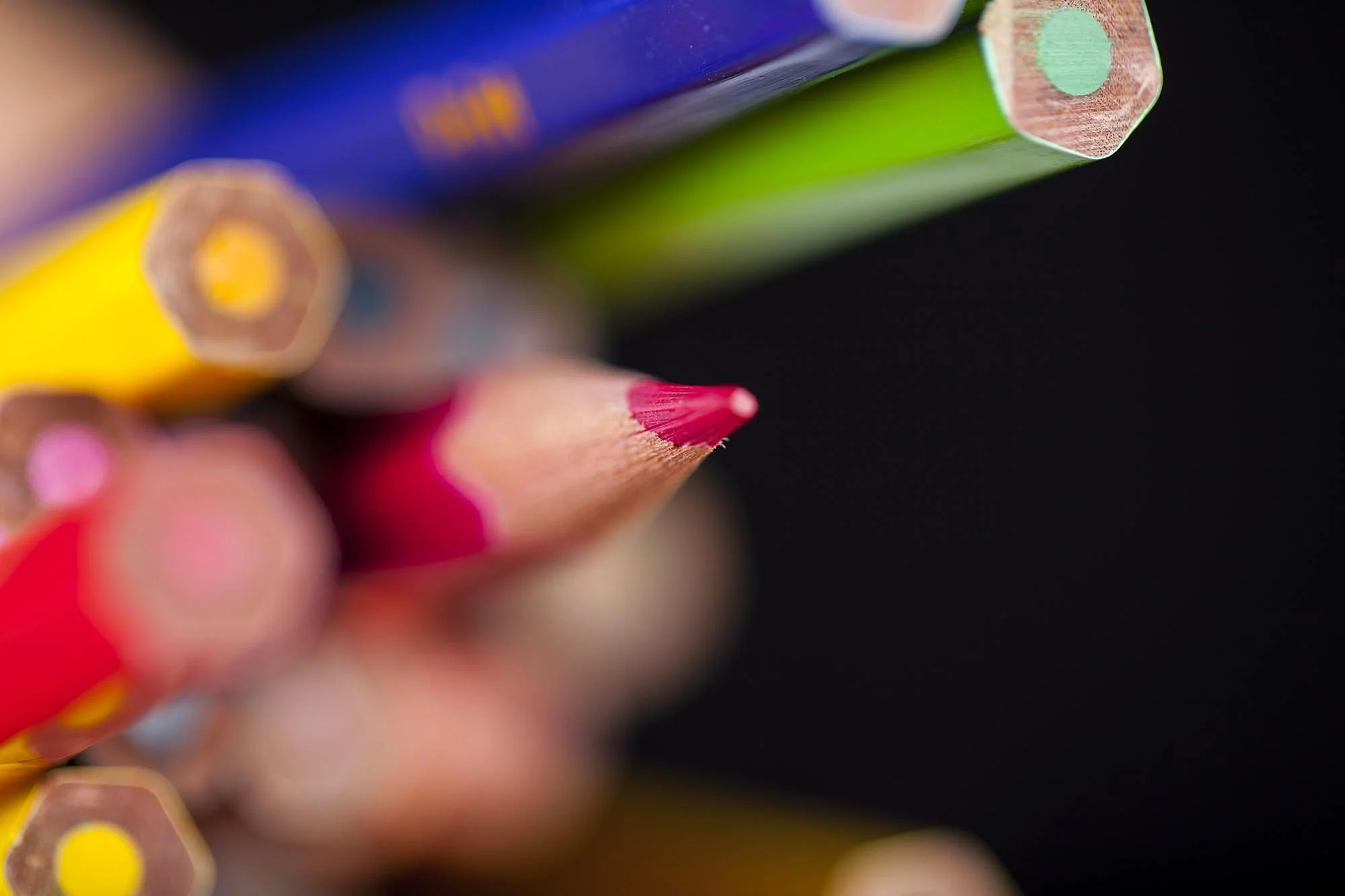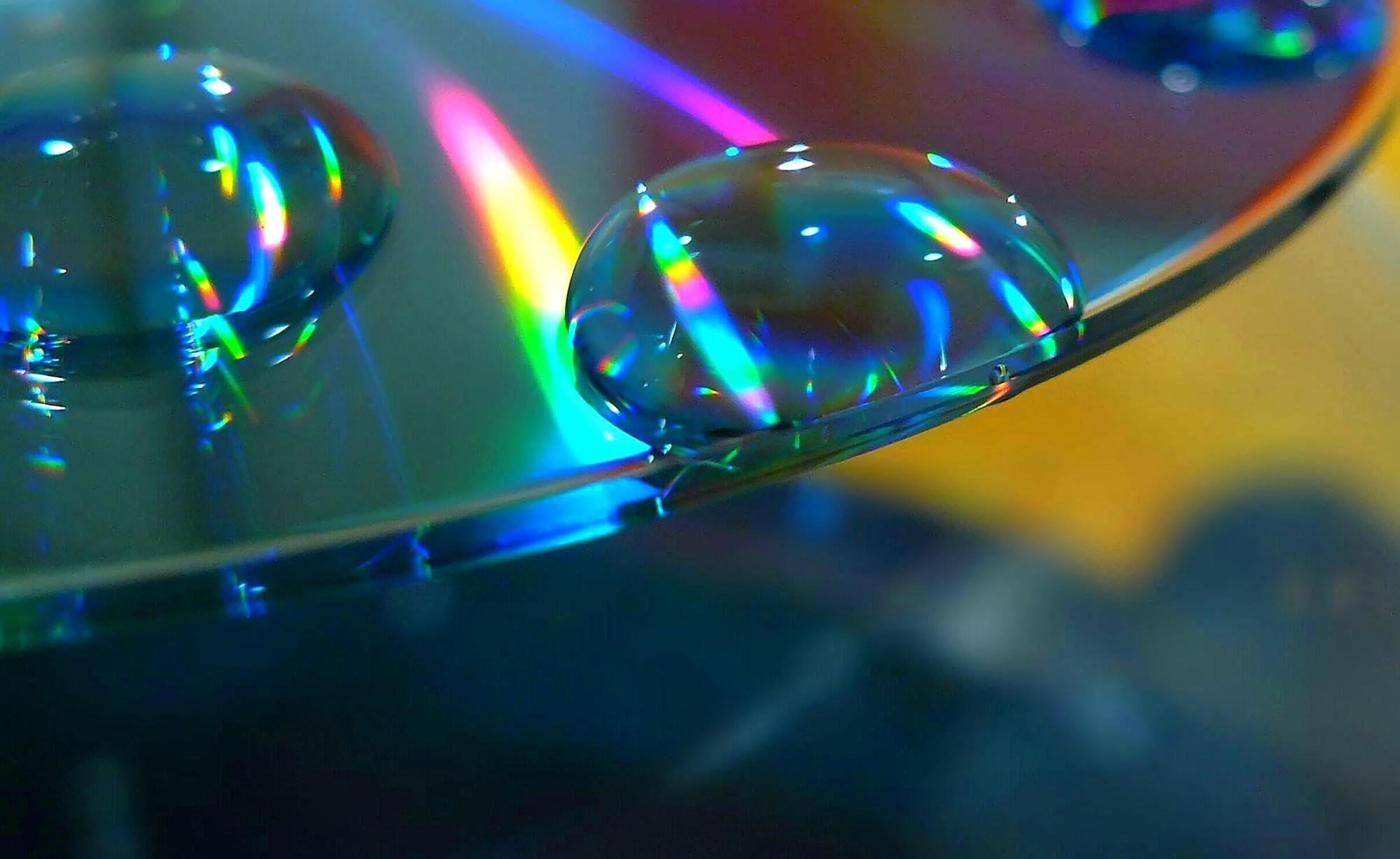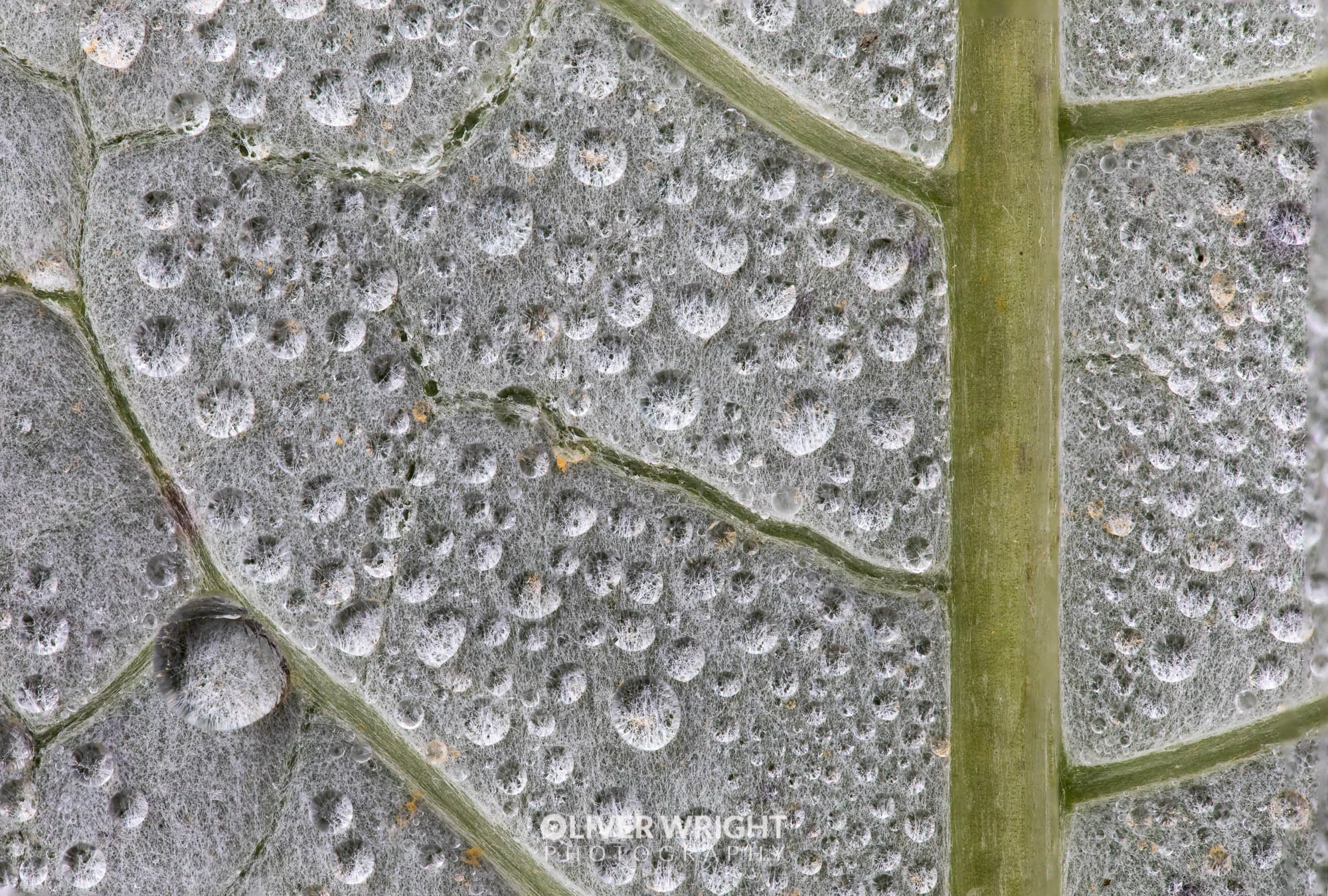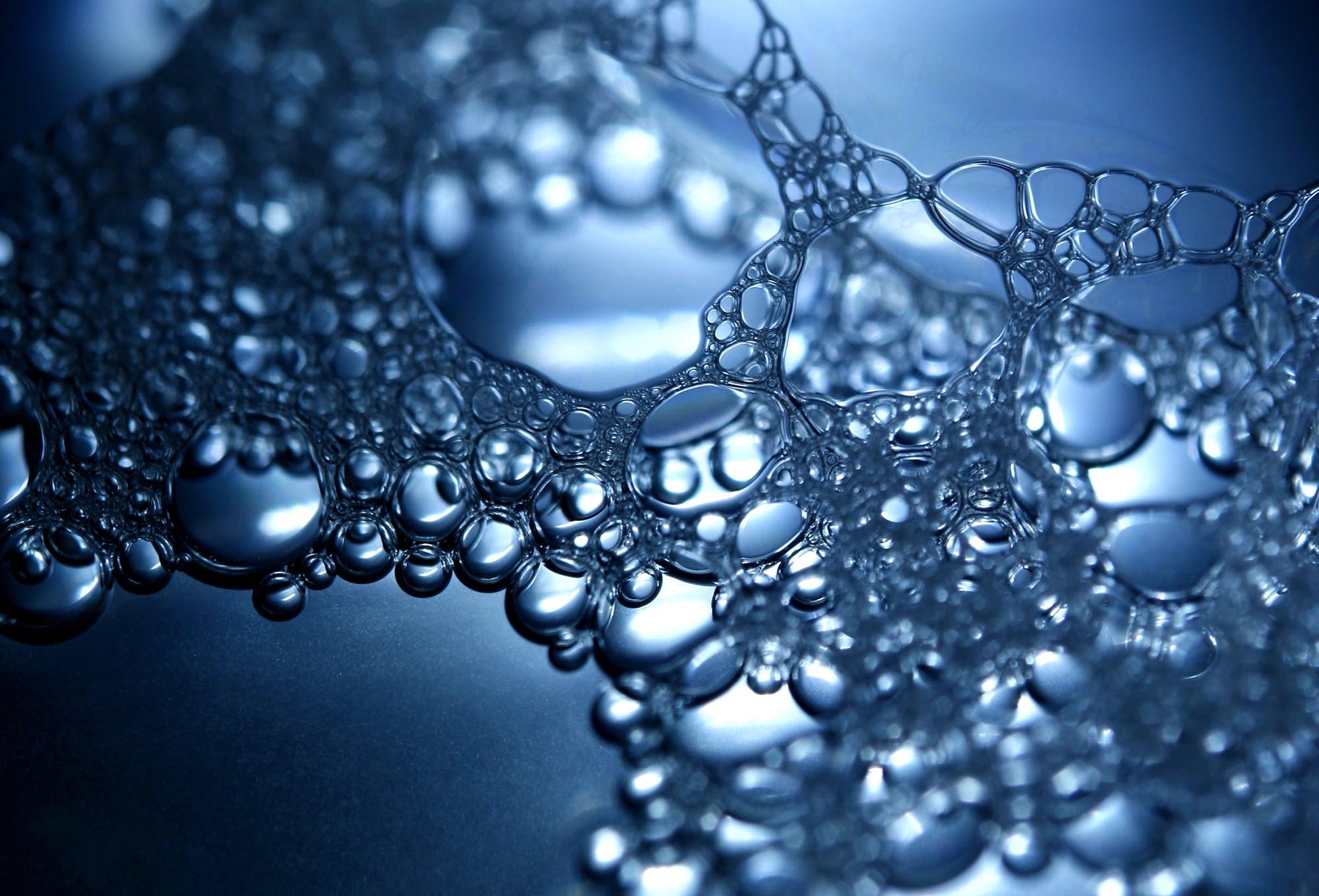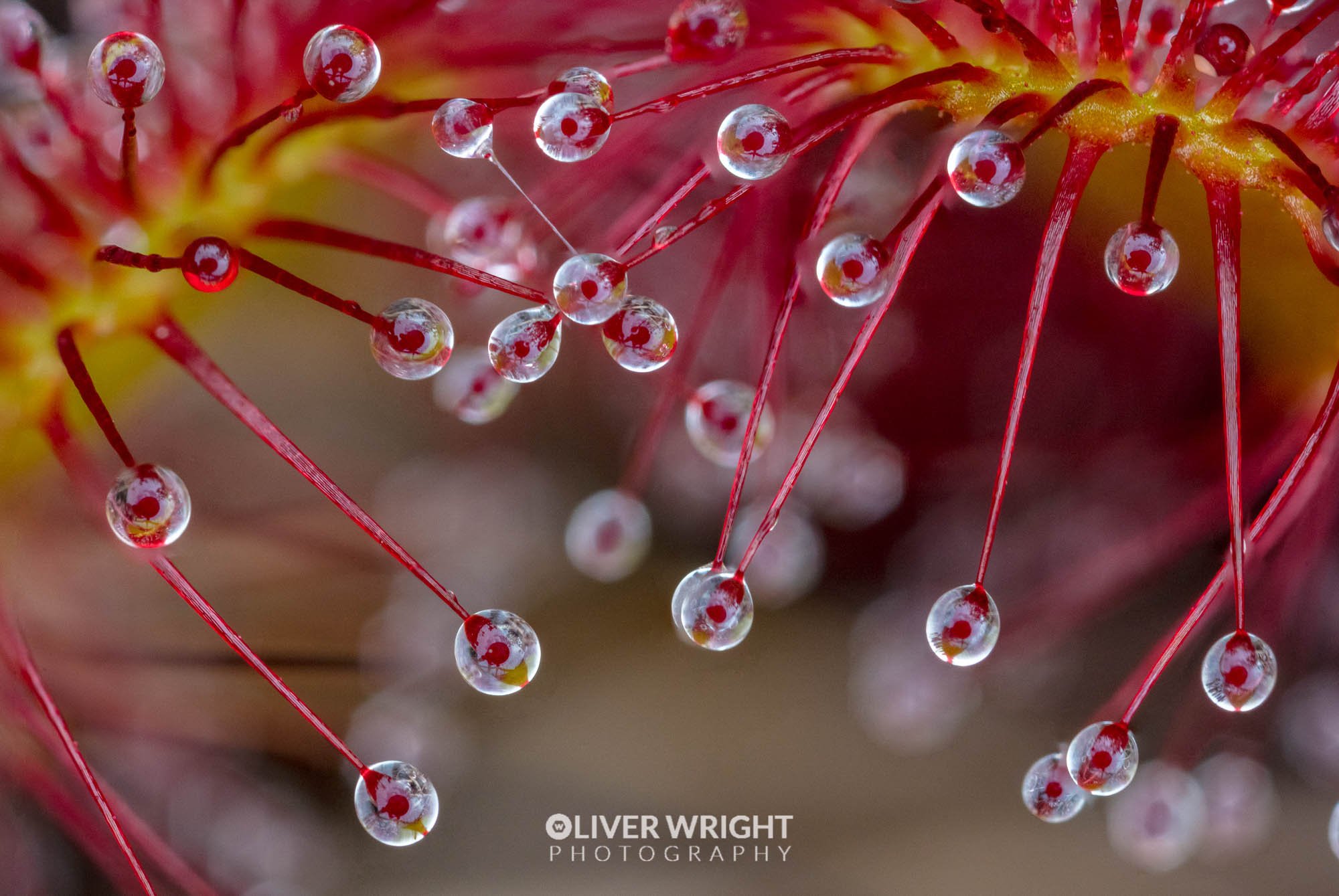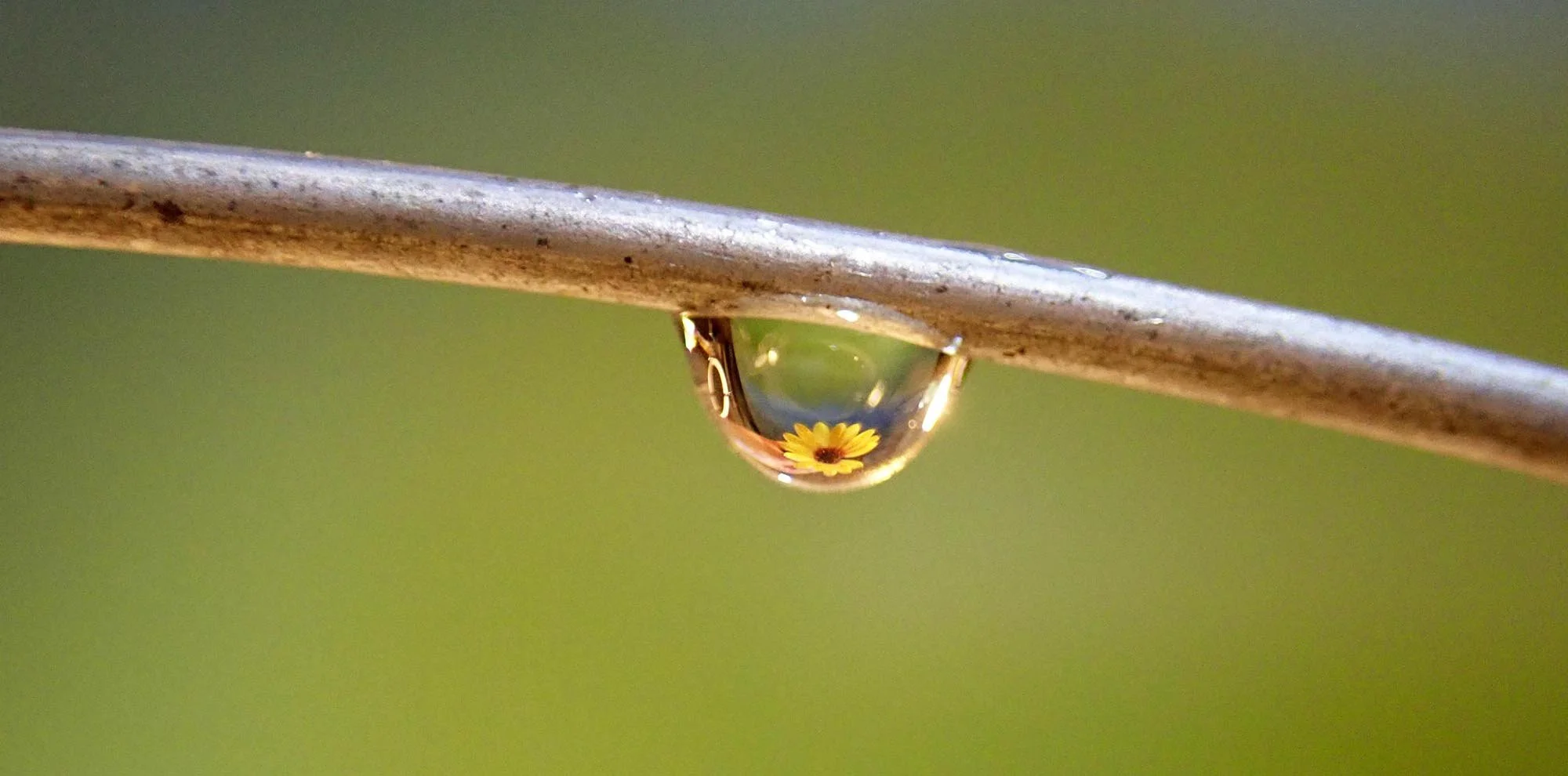Macro Photography Ideas - Top 20 from easy to hard
Here are 20 of the best macro photography ideas ranked from easiest to hardest. From home macro photography with budget equipment, to the advanced technique of hand-held stacking, we’ve put together the best ideas known to macro.
Completely new to the world of macro? No problem! Check out our course with multi-award-winning photographer Oliver Wright here.
Oliver will show you how to unlock the magical world of macro and teach you the secrets behind his high magnification techniques. Not to be missed by any aspiring macro photographer.
Macro Idea 1 - Pencils
Glide a pencil across some paper and snap some photos. Got a pack of coloured pencils? Even better. Group them together to create some contrast in colour.
Macro photography is easy with subjects such as this because it’s an object most people will have laying around the house and it’s something you can practice at home. Zoom in, get close and try to pick up detail that the naked eye may not see. Patterns, colour and contrast are all elements that define this idea, making a simple everyday object appear beautiful.
Credit: Engin Akyurt on Pixabay
Credit: Opal on Pixabay
Macro Idea 2 - Toys
Most parents will know of a toy car lurking beneath the sofa. Well, time to rescue it from its dark depths and get snapping! Photograph it in the home or take it outside of the house to play around with perspectives.
Using subjects such as toys are a great way to experiment with macro photography and it’s also an extremely creative way to capture some interesting images.
Credit: Wilfried Pohnke on Pixabay
Credit: Engin Akyurt from Pixabay
Get access to ALL our online courses - 1000’s of videos, worksheets, critiques of members work, personalised support and much more with our monthly membership.
Macro Idea 3 - Water droplets on a CD
If you enjoy experimenting with colours and reflections, then this idea is for you. Water droplets will create a rainbow effect as they react with the light reflecting off the CD. Experiment with angles to get different colour patterns.
Here’s the technique - Using a spray bottle of water, cover portions of a compact disk, get close and photograph it. Easy!
Credit: Strikers from Pixabay
Credit: Vinicius Amnx Amano on Unsplash
Macro Idea 4 - Leaves
If you look closely at a leaf, you’ll find its structure. The fine lines and configuration of the leaf itself is truly incredible and provides a good macro-opportunity.
Try finding a few dry leaves and have a play around with lighting to really bring out the tiny details when using higher magnification macro techniques.
Macro Idea 5 - Needle & Thread
For this you will need a needle with a big eye. Then try threading different coloured threads for some contrast. If you don’t have different coloured thread, don’t worry! Often the appeal in a photo can lie in its simplicity; a single thread and needle is perfectly fine.
Credit: Dejan Dodic on Pixabay
Credit: Paul Robinson on Pexels
Macro Idea 6 - Feathers
Feathers are made of lightweight material called keratin, just like our fingernails. This gives feathers their delicate texture that enables us to take great macro photos.
With birds growing a new set of feathers each year, you’ll most likely find them on the ground in wooded areas. If you can’t find any on the ground and the idea of opening up a pillow isn’t appealing, your local craft shop will likely stock them.
With macro photography, thinking about the placement of your subject is crucial, especially with such a delicate object like a feather. Try to find a place free of background distractions to really focus on the delicate details of a feather.
Macro Idea 7 – Bubbles
Bubbles are really simple to make and create really effective macro photography. Start by using a clear dish. Add water and some liquid soap. Then shake and stir until you get loads of bubbles. A bit like making a small bubble bath. Then it’s a matter of getting close and photographing them.
For the best effect add a LED lamp, the torch on your phone or any other light source under the clear dish to provide some backlighting. You can even add colour to the light by covering it with coloured gels or sweet wrappers.
Bubbles are great at refracting light, so expect to pick up some multi-colours with this one. Check out our lightroom course to learn how to make these colours stand out even more.
Credit: Alexas Fotos on Pixabay
Credit : Esudroff from Pixabay
Macro Idea 8 - Finger Tips
Another interesting idea is the Fingertips! Again, an easy idea as you should be able to find one of these pretty easily!
Our fingertips have unique detail and varying textures that, when captured, can often resemble other materials.
Photographing fingertips is great practice for using a macro lens or close up filter. This is because it will give you the time needed to work out the right exposure settings and give you good practice in focusing correctly.
Credit: Michael Lai on Unsplash
Macro Idea 9 - Flowers
One of the most common macro photography ideas is photographing flowers. You can photograph them in the comfort of your own home but here’s a good opportunity to get outside. Photographing flowers in their natural environment will help you to learn about dealing with weather, natural lighting conditions and the movement wind creates when doing outside macro photography.
I think a field of natural wildflowers is best for this and to hone your understanding of light when photographing them at different times of the day. You’ll be surprised how the changing sun can change your photography. You can also try adding water droplets with a spray bottle for an added effect.
To watch a pro take macro photos of wild flowers, click here.
Macro Idea 10 - Fizzy Drinks with objects
Time to take a break from photographing everything in your house and pour a nice refreshing drink. Actually, whilst you’re there…..
Fizzy drinks can be a great source of inspiration for macro photography. If you add objects into fizzy drinks, the bubbles will stick to them. Getting close to this will create some fantastic results in a macro photo.
There are lots of ways you can add to this effect. One common one is to add a black backdrop and some backlighting as mentioned in the bubble’s idea.
Then simply add some fruit into a glass of fizz and see what happens!
Credit: Rebecca Diack on Pexels
Credit: Rebecca Diack on Pexels
Macro Idea 11 - Morning grass
Set those alarms and enjoy the fresh morning air. Early mornings, especially in the spring/summer, will give morning dew on growing grass. This provides a great opportunity for macro photography.
Get to grass level and focus on a single water droplet on a blade of grass. This works great if you have touch screen focusing and a flip screen on your camera.
Also think about the positioning of the sun. Having the sun in front of you will provide a back lit image which really suits this subject. However, shooting into the sun can cause you to over or under expose the picture. To avoid this, bracket your pictures by at least 2 stops either side of the camera’s exposure.
To learn about exposure bracketing, click here.
Credit: Erop from Pixabay
Credit: Myriams-fotos from Pixabay
Macro Idea 12 - Pets
They say ‘never work with animals or children’. Well let’s put that to the test. It’s time to grab your furry friends and ask them to strike a pose. Animals have some beautiful features for macro photography. Try taking a close-up photos of their eyes, nose, fur and claws. Might sound a bit weird but it does make for some interesting macro photography.
Credit: Pezibear on Pixabay
Macro Idea 13 - Water & Oil
This idea is very effective with a nice easy set up. We recommend using a clear glass dish to capture the shapes clearly and allow light to be projected through the water.
Simply add some drops of oil onto water and as the oil reacts with the water it will create what looks like bubbles. You can use an eyedropper tool with olive oil, sunflower oil or any vegetable oil to create this effect.
If you want to take it a step further, try shining a coloured light through the bottom of the glass container. Using coloured light in this way creates abstract results and, in some instances, enhances the separation of the water and oil.
Credit: A Different Perspective on Pixabay
Credit: Konyvesotto on Pexels
Macro Idea 14 - Matchsticks
Capturing fire and wispy smoke with matchsticks is a simple idea that will give you interesting results.
Try striking a match against its box and see if you can capture that spark close up. Let the match burn a little and take some photos of the flame. Once done, blow the matchstick out and capture the smoke drifting off the matchstick. Smoke offers beautiful wispy shapes that can be tricky to capture but keep practising and the results will be worth it.
Credit: Felix Wolf on Pixabay
Credit: Roegger on Pixabay
Macro Idea 15 - Eyes
The detail you can find in eyes is incredible! This idea will need high magnification techniques so it’s a good one to practice if you’ve just bought a new, and expensive, macro lens. Find a willing model, get close, and photograph their eye.
Clearly you don’t use flash for this idea, but you will need a lot of light so the pupil contracts. In front of a window is fine. As the pupil contracts it will expose the coloured part of the eye which is much more interesting than the dark black pupil.
Macro Idea 16 – Water Drop Refraction
There’s a lot of room to be creative when it comes to photographing water droplets and, in this example, we will use them to refract light.
The refraction of light in its simplest term is the bending of light as it passes from one transparent substance into another.
By placing an object or picture behind a water droplet, you will be able to capture that subject refracted in the water droplet. It takes a bit of practice and a lot of patience but here’s the technique:
1 > Put water droplets on something that will not move. Doing this inside is a good idea to avoid unnecessary movement created by gusts of wind
2 > Set up your camera and macro lens on a tripod. Then get them as close to your water droplet set up as possible without losing focus
3 > Then move the background subject towards and away from the water droplets until it looks sharp within them. A bit like how you would move a magnifying glass.
After a few practice runs this effective technique will create stunning results.
Credit: Beverley Buckley on Pixabay
Credit: Gary Yost on Unsplash
Macro Idea 17 - Snowflakes
Clearly weather pending but getting that signature snowflake shot is crucial to every macro photographer’s portfolio. Since every snowflake is unique, your photos will be too!
To get really good results with this idea you will need to use high magnification macro techniques. To learn what they are and how to create them, click here.
Credit: Aaron Burden on Unsplash
Credit: Aaron Burden on Unsplash
Macro Idea 18 - Butterflies
It is safe to say that everyone thinks butterflies are beautiful and amazing to photograph, but how difficult is it really? Well, very difficult in fact!
Butterflies tend to rest when the temperatures are a lot cooler, so trying to photograph them midday in nearly impossible! Make the effort to go out in the very early morning, just before sunrise. Believe me it will be worth your while. Butterflies tend to roost in long grass and it’s a good idea to get to know your area before you go photographing. If you see butterflies there in the daytime, it’s likely they are roosting there in the morning.
Also consider the different species of butterflies that are active at different times of the year. It is constantly changing!
Watch pro macro photographer Oliver Wright teach you how to take macro pictures of butterflies here.
Macro Idea 19 - Insects
If you’ve come over from our Macro course, you will have seen Oliver’s incredible work with the insect world. Why not have a go yourself, but please do not go steaming into this type of photography from the offset. Training and practice are essential here.
It’s also not just about having a great lens and the knowledge of photography. You also have to know about the insects you are photographing. Where they are found, when they are active etc. Doing your research on animals, also called fieldcraft, is extremely important in macro photography.
Of course, this isn’t something you can just learn overnight! It may take years of practice and patience, but everyone has to start somewhere. Our Macro photography course teaches, not only the basics, but also the knowledge and techniques needed to take images like these.
Macro Idea 20 - Spiders
Spiders are extremely difficult to photograph which is why it’s a must for any aspiring macro photographer, to get a picture. In particular, the famous jumping spiders! It takes patience, plenty of practice and an understanding of the species you want to photograph.
Spiders are very different to butterflies in terms of movement and activity. Jumping spiders for instance, will not be found on cold mornings. You see them when the day heats up and with the heat comes active movement. Clearly this movement makes them very difficult to photograph.
You will find them crawling out of small cracks and holes in wood and brick. Before you try to get a photograph spend time watching the movement of the spider and notice its actions. The key here is to know when it’s going stay still; when it’s still, grab that picture!
To get truly sharp and crisp macro pictures you may need to use a technique called handheld stacking. To learn that technique and watch a macro pro take pictures of jumping spiders, click here.
I hope you liked this blog on macro photography ideas, please leave us a comment and support us by sharing it with your friends and subscribe to our newsletter at the bottom of this page for more.
We also have an excellent learning community on social media so please join us there as well.
Thanks for popping by and remember, learn more at The School of Photography.

